#BOUasm22 – Keynotes
Citizen science and birds: people powering ornithology
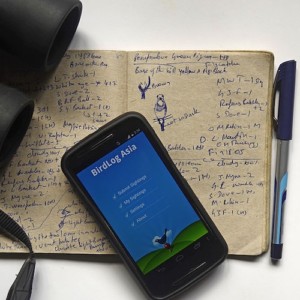
10 – 11 October 2022
A virtual event on Zoom and Twitter
Open Panel Session
Monday 10 October, 1800-1930 UTC
This open panel session is free to attend.
If you wish to attend (and are not already registered for the conference), please register at the link below. After registering, you will receive a confirmation email containing information about joining the webinar.
Register for Open Panel Session
Introducing our open session panel
Citizen science powering ornithology: how public participation furthers the work of the British Trust for Ornithology (BTO), the Cornell Lab of Ornithology and the Rare Breeding Birds Panel (RBBP)
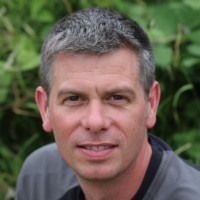
Adam Hart (Chair)
University of Gloucestershire, UK
Professor of Science Communication, biologist, broadcaster
x
x
x
x
x
x
x
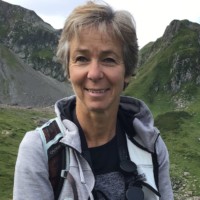
Juliet Vickery
British Trust for Ornithology, UK
Chief Executive Officerx
The British Trust for Ornithology, a UK based environmental NGO, represents a 90 year-long, unique partnership between citizen scientists and professional staff. It engages and supports volunteer observers to help deliver long term, nationwide data on population trends and demography of breeding and wintering birds. This talk will outline how increasingly sophisticated approaches, in terms of survey design, recording methods, data analysis and communication of results alongside better training and support for observers, has resulted in an extraordinary understanding of ecology and biology of UK’s breeding and wintering birds. These data now need to be used more powerfully than ever to help address the two environmental crises we face of climate change and biodiversity loss. I will also consider the role citizen science can play in our own health and wellbeing and in engaging broader more diverse cross section of society in the natural world.

Ian Owens
Cornell Laboratory of Ornithology, US
Louis Agassiz Fuertes Director
Birds play a unique role in our understanding of how the planet works and conserving its diversity because, through the efforts of bird watchers and citizen scientists, we know more about large-scale patterns of occurrence, abundance, movement and population trends in birds than any other comparable group. I will explore how emerging technologies are opening-up new horizons for birdwatchers and citizen scientists to gather even more useful data to inform conservation efforts, to do that at an unprecedented scale, and inspire even more people to care about birds and nature. I will start by highlighting the power of applying artificial intelligence models to large-scale databases of ‘unstructured’ observations, and what this reveals about population trends at a continental scale. I will then look at how automatic-recognition of songs and calls is changing how we find and identify birds, and the impact of this ‘bioacoustic revolution’ on birding, monitoring and public engagement. Finally, I’ll review how these new technologies are empowering birding communities around the world, and how to make new technologies available and useful at a global scale.
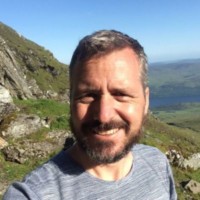
Mark Eaton
Rare Breeding Birds Panel, UK
Secretary
The Rare Breeding Birds Panel (RBBP) has collated data on rare breeding birds in the UK since 1973, and uses these data to report on the status of their populations and support conservation and research purposes. Data is received from a wide range of sources, but the great majority comes from citizen scientists, either targeting effort at collecting data on rare breeding birds or more passively making observations as part of recreational birdwatching activity. This talk will describe how the RBBP functions and give examples of its work. I will outline the great value that the RBBP obtains (with limited resources) from the traditions and culture of bird recording in the UK, but also discuss the shortfalls of current approaches, and the barriers to more effective monitoring.
Introducing our keynote presenters
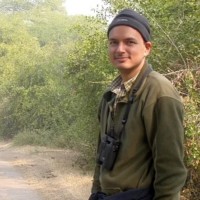
Suhel Quedar
Nature Conservation Foundation, India
Public participation in monitoring the abundance of Indian birds
Session: Citizen science in ornithology: population monitoring and estimating demographic parameters
Ornithology in India has a long history of over 150 years. Despite this, there is much to learn about fundamental aspects like range, seasonality and abundance. Even more rudimentary than this is our understanding of population change, with the exception of a few well-studied species. India is a big country with relatively few professional ornithologists, but a large and increasing number of skilled and enthusiastic birdwatchers. In this talk, I describe an effort to work with individuals and groups of birdwatchers in an attempt to gather observations onto a common, public platform. Since 2014, the information collated in this way has transformed our understanding of the distribution and timing of migration of Indian birds, and has enabled the first assessment of abundance trends of most of the species that regularly occur in the country.
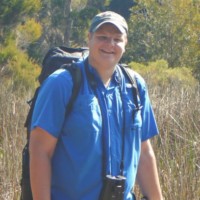
Corey Callaghan
German Centre for Integrative Biodiversity Research (iDiv), Germany
Can we optimize biodiversity sampling by citizen scientists?
Session: Challenges and opportunities of citizen science data
Citizen science data are increasingly used to monitor biodiversity. But these data are ‘noisy’, with redundancies and gaps arising from unstructured human behaviors in space and time. The collective effort of citizen scientists can generate a great deal of data quickly, but can this data collection process prioritize the powerful — but finite — effort? I will discuss whether the information content of these data can be maximized for biodiversity conservation and monitoring. Using citizen science data from the eBird platform as a case study, I will demonstrate quantitative frameworks of how citizen science sampling and initiatives can be prioritized. I will then show some results of whether or not citizen scientists are indeed willing to sample biodiversity in a more meaningful manner. Biodiversity monitoring will continue to rely on a diverse set of end-users and contributors, including citizen science data. The capacity to prioritize where biodiversity data are most urgently needed will provide the fundamental data to improve environmental decision-making. I will conclude with a potential vision for engaging citizen scientists to sample biodiversity in the future.

Alison Johnston
University of St Andrews, UK
Big data in ornithology: challenges and opportunities from the rise of citizen science
Session: Challenges and opportunities of citizen science data
Ornithological citizen science data collection has increased rapidly in recent years. This increase is mostly due to the expansion of projects that collate bird observations without using a designed or pre-specified protocol. The flexible protocols attract many participants, and the resulting datasets are therefore many times larger than traditional ornithological datasets. These ‘big data’ provide tempting opportunities to learn more about birds in parts of the world and times of year with few existing data. However, these data are also messy, which present challenges for the researcher or conservationist who need reliable ecological results. We explore the challenges and opportunities of the new era of big data in ornithological citizen science. We describe some analytical methods that can be particularly valuable with unstructured or semistructured citizen science data. And we ask whether these messy data will ever replace the rigour of structured surveys.
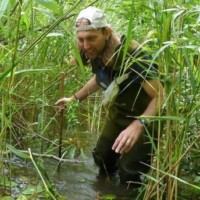
Dave Leech
British Trust for Ornithology (BTO), UK
Adapting to a changing world: monitoring schemes must follow nature’s lead
Session: Citizen science in ornithology: population monitoring and estimating demographic parameters
The British Trust for Ornithology’s (BTO’s) Ringing and Nest Record Schemes are the largest and longest-running of their type in the world. More than 3,000 volunteer surveyors contribute their time and effort annually, resulting in spatial and temporal coverage of an extent that would be impossible to achieve via the use of professional fieldworkers alone. Structured projects provide standardised data that contribute to population models, while the substantial additional volume of undirected activity supports training and encourages innovation; demographic schemes currently play a key role in assessing risks of disease incursion and predicting impacts of habitat management, uses that could not have been foreseen when the datasets were initiated.
This model has served the conservation community well for many decades but it must adapt to an increasing array of new challenges. Current recruitment and training strategies may not be optimal for an increasingly mobile population with a decreasing amount of free time. A more litigious environment may act as a disincentive for landowners granting access to monitoring sites, while the desire for greater accessibility to data inevitably raises tricky questions of ownership. Scrutiny of practices from a bird and participant welfare perspective necessitates greater transparency around the checks and balances in place. This presentation will not provide all the answers but aims to stimulate the discussions that eventually do.
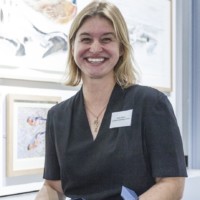
Becki Lawson
Institute of Zoology, Zoological Society of London, UK
How citizen science has helped us learn about garden bird health
Session: Citizen science in ornithology: behaviour and novel applications
Feeding garden birds as a part of wildlife friendly gardening practice is a common pastime in Great Britain. Multiple citizen science projects have capitalised on the opportunity provided by this close human/wildlife interface, to gather data on wild bird species distribution and abundance, and to advance understanding of their behaviour and ecology. Whilst resource provision of supplementary food can benefit wild bird populations, it may inadvertently alter pathogen transmission dynamics and predispose to disease spread through, for example: congregation of birds in high density at feeding stations; species feeding in close proximity that would not typically mix; or poor levels of hygiene which allow build-up of contaminated food waste and faeces. Since the early 1990s, veterinarians at the Zoological Society of London have relied on help from concerned members of the public who report sightings of sick or dead garden birds, enabling disease investigations to be conducted. Since 2013, we have partnered with scientists at the British Trust for Ornithology, Froglife and the Royal Society for the Protection of Birds, on the Garden Wildlife Health project. With assistance from members of the public and participants in the BTO’s Garden BirdWatch scheme, together we have learned about multiple endemic and emerging diseases affecting garden birds, their impact on biodiversity and wild animal welfare, and potential implications for public and domestic animal health. This talk will illustrate with examples how we translate surveillance findings collected through citizen science into action by provision of best practice guidance for supplementary feeding to help safeguard wild bird health.
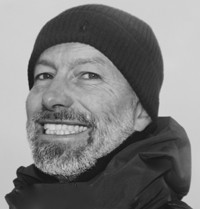
Finn Danielsen
Nordic Foundation for Development and Ecology (NORDECO), Denmark
Community-Based monitoring: A tool for nature-based solutions, OECMs (Other Effective area-based Conservation Measures) and convivial conservation?
Session: Benefits and costs of citizen science for organisations, participants and birds
In recent years, the use of Indigenous and local knowledge for informing decision-making has received increased attention. Likewise, new approaches have been proposed to address the escalating biodiversity, climate, and development challenges by protecting ecosystems. These include Nature-based Solutions, other effective area-based conservation measures (OECMs), and convivial conservation. If the new approaches are not to repeat the mistakes of past interventionist-based conservation, causing resource conflicts, green grabbing, human rights abuses, and failed ecosystem protection, they will need to involve community members and their knowledge. In fact, their success or otherwise will critically depend on it. In this key-note, I will use practice-based experiences and the literature on community-based monitoring from the past five years to explore how community-based monitoring is used, summarize the advantages and shortcomings, propose how it can be more effective, and discuss how the field is likely to evolve.

Tom Auer
Cornell Lab of Ornithology, US
Returning the gift: empowering citizen scientists to monitor and conserve the world’s birds
Session: How to engage and retain citizen scientists in ornithology
Citizen science projects in ornithology tend to have a one-directional nature with regards to the data being collected. Observational frameworks are established, often with participant incentives related to curation of their own data, then citizen scientists collect and report the data and academics analyze and publish on that data. While altruistic motivations for participation can be met in this manner, the one-directional tendency fails to fully realize potential positive feedback loops in the citizen science participation process. Through the lens of a “value-added reciprocity cycle,” I will discuss emerging ideas for how citizen science projects can amplify their impact by leveraging recent advances in a variety of fields, including machine learning, artificial intelligence, social science, and social justice. With these advances, projects can reciprocate the original gift of data collection by generating new, value-added products and processes that facilitate learning, increase motivation, satisfy altruistic needs, empower advocacy, and foster inclusivity, working towards shared goals of appreciating, monitoring, and conserving our world’s birds.
Scientific Programme Committee
Dr Ellie Owen | Chair | RSPB, UK View
A/Prof Dr Arjun Amar | FitzPatrick Institute, University of Cape Town, South Africa View
Dr Tom Hart | University of Oxford, UK View
Dr Joelene Hughes | BOU Meetings Committee | RSPB, UK View
Images
Notebook and smartphone | PJeganathan CC BY SA 4.0 Wikimedia Commons

